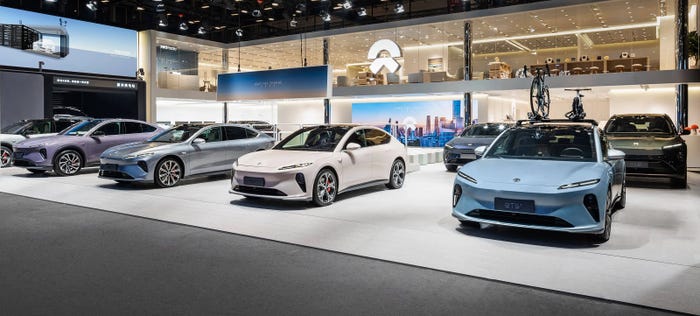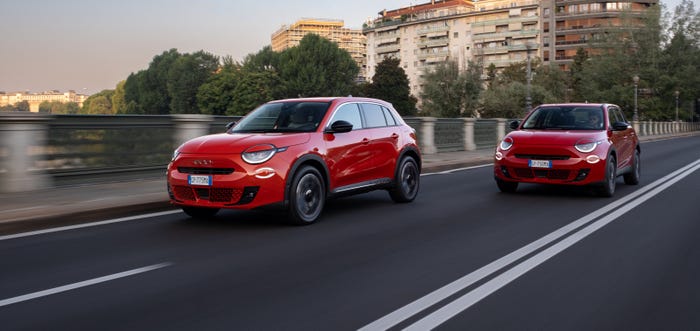2017 Wards 10 Best UX Quick Hits
A summation of all 23 vehicles evaluated as part of the 2017 Wards 10 Best User Experiences competition. Many of these comments are taken directly from score sheets submitted by WardsAuto editors. Prices listed are sticker, as tested. Winners in red.

Acura TLX ($45,750)
Nice startup routine and all the elements are here, but graphics appear dated and touchscreen is crowded and hard to manage. Good voice controls.
Audi Q5 ($52,700)
Like its bigger brother Q7 that claimed an inaugural 10 Best UX award, the Q5 offers superior features, but both now lag the all-new S5.
Audi S5 Sportback ($68,350)
This UX is the benchmark for autonomous functionality, graphics, user friendliness and infotainment. The Virtual Cockpit is a virtual masterpiece. UX really helps sell this car.
BMW 5-Series ($82,360)
From wireless Apple CarPlay to automated perpendicular parking, the 5-Series does everything we loved about the 2016 winner 7-Series – and more – but for less money.

Buick logo projected on pavement below Enclave's rear bumper shows where to kick to raise auto-liftgate.
Buick Enclave Avenir ($59,435)
Minimalist in lack of complexity, with lightning quick phone pairing, superior navigation with real-time traffic updates and easy operation. Six USBs, a pair for each row.
Cadillac CTS V-Series ($103,260)
Disappointment. Crazy money for a car that lacks driver-assistance technology available in Hyundai Elantras. Touchscreen accuracy problematic. Super Cruise, where are you?
Chevrolet Bolt EV ($43,905)
Sci-fi startup sequence and top-shelf displays provide key information to limit range anxiety, but lack of on-board navigation and ADAS features on our tester knocked it out of contention.
From Chrysler to Land Rover
Chrysler Pacifica Hybrid ($47,885)
A solid performer offering good displays, hybrid-drive information and high-functioning ADAS, but doesn’t showcase the kind of customization available in the latest iteration of UConnect.
Dodge Durango SRT ($74,950)
An enthusiast SUV that’s nirvana for a UX geek, combining the latest UConnect and multi-color Performance Pages with a visceral response to create a direct link between UX and driver.
Ford F-150 Raptor ($65,715)
Rough-and-tumble hardware and Sync 3 software give this beast unparalleled capability and branding, backed by solid lane-keeping with bonus points for trailer back-up assistance.
Honda Odyssey Touring Elite ($47,610)
Superior second-row flexibility, long-haul lane-keeping and adaptive cruise control, killer connectivity and CabinTalk/CabinWatch rear-seat communication system put Odyssey on top.

Steering wheel controls conveniently placed in Hyundai Ioniq.
Dashboard pyrotechnics wow as does superior ADAS, but too many small virtual buttons on touchscreens make it hard to manage and shortage of USB ports (one) is detrimental.
Infiniti Q60 Red Sport ($62,355)
Infiniti’s Safety Shield suite of ADAS features and all-around cameras and sensors are class-leading, but lane keeping lacks confidence and stacked screens have some of us seeing double.
Kia Niro Touring ($32,445)
Excellent array of ADAS for the money, but hampered by frustrating, multi-layer voice command system and tiny touchscreen icons and displays.
Land Rover Discovery Td6 ($66,945)
Myriad issues with phone pairing, lacks voice control for navigation and features an intimidating array of buttons. Superb interior, but UX eludes us.
From Lexus to Volkswagen
Lexus LC 500 ($101,465)
Huge center display, gorgeous lighting effects backed by strong voice controls for navigation, audio, climate controls. But map detail is lacking and joystick touchpad controller is frustrating.
Lincoln Continental ($79,780)
Special UX connection from the starry startup to the stellar autonomous driving functions. Instant connectivity, uncluttered layout and standout multi-color head-up display and mapping.
Mazda CX-5 ($34,380)
Very competitive for the price, with excellent controls via dial, touchscreen, voice or steering wheel buttons. Good adaptive cruise control, quick connectivity and 3D maps add value.

Large gauges unmistakably Mini.
Loads of character, nice interior and good phone connectivity, but missing many of the basics of UX design and engineering such as navigation and blindspot detection.
Nissan Rogue SL ($35,475)
Well-equipped for the price, but ADAS seems erratic and lacks clear indication of its intentions, while voice controls offer myriad options but nag with too many steps.
Subaru Impreza ($29,260)
Our value leader, Impreza isn’t fancy, but its big color screen is informative, and camera-based adaptive-cruise control is the gold standard for providing confidence-inspiring feedback.

Reconfigurable center display in Toyota Camry Hybrid.
Loaded with delightful surprises, gets top marks for ADAS and parking assistance. Lack of embedded nav (proprietary Entune access required) hampers overall ease of use, functionality.
Volkswagen Atlas ($49,415)
Atlas doesn’t stray too far from VW’s understated approach to UX, but quick-responding screen, excellent graphics and top-notch ADAS distinguish 3-row CUV from automaker’s past models.
Read more about:
2017 10 Best UXAbout the Author(s)
You May Also Like





